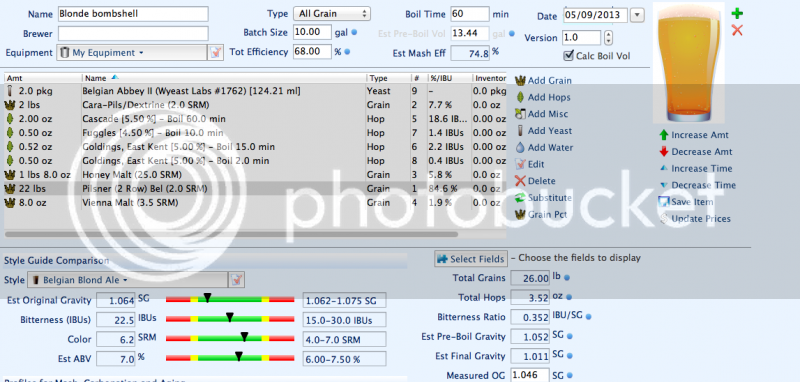drakeskakes
Well-Known Member
- Joined
- Jan 7, 2013
- Messages
- 55
- Reaction score
- 4
Here is my recipe.
Initial mash at 148 for 75min
two step batch sparge at 154.
Will probably ferment in the low 70s to bring out some esters.
(Still pretty new but trying to get inline with the lingo and the little details)

Initial mash at 148 for 75min
two step batch sparge at 154.
Will probably ferment in the low 70s to bring out some esters.
(Still pretty new but trying to get inline with the lingo and the little details)




